
Features
Structural
Training
Back to Basics: Easy check-in system for SCBA
We all know the routine – every time we come on shift or conduct our monthly or bi-weekly truck checks, we are supposed to check our SCBAs. In the full-time departments, this is standard operating procedure. In the volunteer departments, this is also a part of the basic operational procedures.
February 5, 2009
By Mark Van Der Feyst
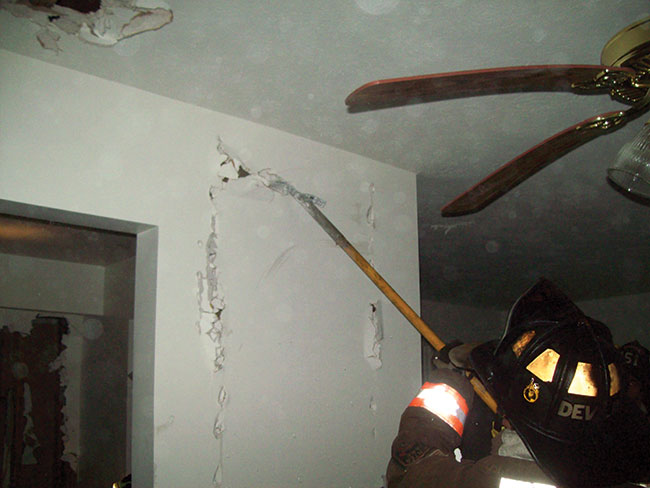 |
|
| One type of SCBA with integrated PASS alarm. When checking your SCBA, it is a good idea to lay it out. |
|
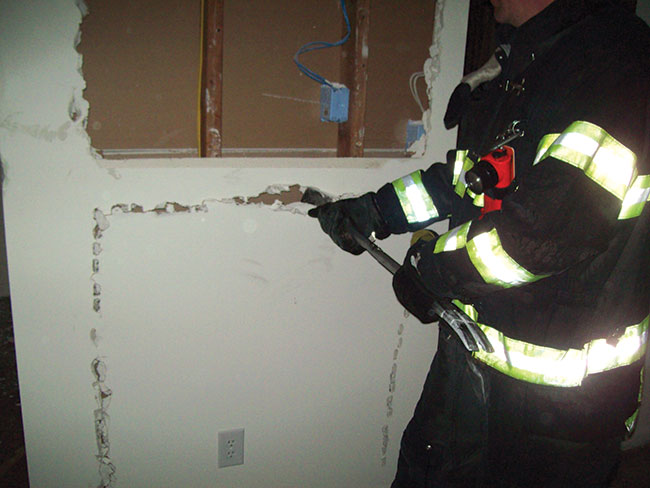 |
|
| Another type of SCBA. Note the PASS alarm is integrated but not a part of the chest gauge. Here we can see the four components of the SCBA
|
|
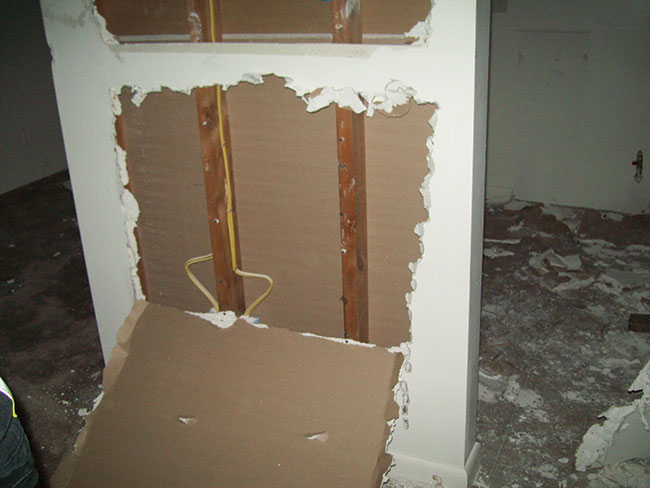 |
|
| When checking your cylinder, it is a good idea to check the hydrostatic date, the initial service date and the cylinder’s rated pressure.
|
|
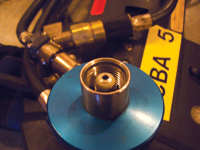 |
|
| Here we can see the O-ring is present. Advertisement
|
|
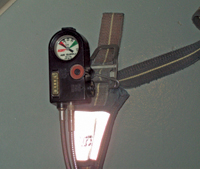 |
|
| One type of an integrated PASS alarm.
|
We all know the routine – every time we come on shift or conduct our monthly or bi-weekly truck checks, we are supposed to check our SCBAs. In the full-time departments, this is standard operating procedure. In the volunteer departments, this is also a part of the basic operational procedures. So why are we not checking our SCBAs correctly or routinely? This is a question that all firefighters must answer. Do you check your SCBA consistently and are you thorough about it?
Your SCBA is a vital piece of PPE. With this piece of equipment we are able to protect our respiratory system from hazardous air contaminants. Our respiratory systems are the largest systems that need to be protected in order for our bodies to function properly. They are also the systems most susceptible to hazardous environments. One breath of a toxic substance can have immediate effects on our health. Time and time again we read about firefighters dying because of what they inhaled years ago when SCBAs were not available or as widely used. WSIB has launched an advertising campaign within the fire service to promote the wearing of SCBAs. It seems that some are still not getting the message.
Our SCBAs are tested to stringent standards as set by NIOSH. This means that NIOSH tested the SCBA to its standards, NFPA standards and other pertinent standards to ensure that it will protect us in an IDLH environment. SCBAs are given a rating of 10,000 by the NIOSH. This means that for every 10,000 particles of substance in the environment, only one particle will make it through the SCBA. This is the highest rating available for our respiratory system protection. An N95 mask has a rating of 10. A full-face respirator has a rating of 50. We are given the best protection for our lungs and we don’t even know it.
I have seen many people in my time on the job check their SCBAs, both full-time and volunteer. For the most part, we do a very poor job. Most people just look to see if they have a full bottle. I have seen others rely on the driver of the truck to check their SCBAs. This I do not understand! How do you know if your SCBA is working properly? The only way to know is to check your own SCBA. This is your protection for your lungs; do not rely on someone else to check your SCBA for you.
So, how should we check our SCBAs? There is a simple check system that I am going to share with you. If you follow the points entirely, you will complete a thorough check of your SCBA. It may take a little time in the beginning but after a few times through, you will be able to complete this thorough check in as few as five minutes. This system will work with any name brand SCBA.
1. Visually inspect the complete respirator for worn or aging rubber parts, worn or frayed harness webbing or damaged components.
2. Check the air cylinder for the latest hydrostatic test date to ensure it is current – aluminum cylinders every five years, carbon fibre every five years.
3. Aluminum air cylinders – Visually inspect the air cylinder for dents or gouges in the metal. Cylinders that show exposure to high heat or flame such as paint turned brown or black, decals charred, gauge lens melted or a distorted elastomeric bumper shall be removed from service, emptied of compressed air, tagged and sent for repair.
4. Carbon fibre air cylinders – Visually inspect the cylinder for cuts and gouges greater than the stamping on the bottle. Check for signs of structural damage such as bulges or concave areas. Check for signs of heat as mentioned above.
5. Check the air cylinder for full indication.
6. Ensure all air is bled out of the system by opening the purge valve on the regulator. Remove the reducer hose coupling and check the condition of the nylon nipple seal. Be sure there is an O-ring present. Close the purge valve.
7. Check to ensure the reducer hose coupling is hand tight to the air cylinder valve outlet.
8. Check to ensure that the breathing regulator purge valve is closed.
9. Check in face piece assembly. Inspect the following:
a. Check the overall condition of the Kevlar head harness and four-point
adjustable straps;
b. Check the overall condition of the rubber seal;
c. Check to ensure that the nose cup is intact and attached to the mask by way of
plastic retaining ring;
d. Check to ensure both exhalation valves are firmly attached to the nose cup;
e. Check to ensure that both voice emitters are attached to the nose cup;
f. Visually check for any cracking of the face piece lens and check the outside of
the face piece to ensure that both
plastic tabs are in place and free from any cracking;
g. Check to ensure the voice emitters mounting bracket is secured;
h. Don the apparatus and attach the face piece.
10. Fully depress or push in the donning switch and release.
11. Slowly open the air cylinder valve all the way. Compare the chest gauge with the bottle gauge to ensure that both pressure readings are within 100 psi of each other.
12. Don the face piece and ensure you have a good seal.
13. Inhale sharply to automatically start the air flow.
14. Breathe normally from the face piece to ensure proper operation.
15. Remove the face piece from your face. Air shall freely flow from the face piece.
16. Fully depress or push in the donning switch. The flow of air shall stop.
17. Rotate the purge valve one-half turn counter clockwise. Air shall flow freely from the regulator.
18. Return the purge valve to the closed position. Air flow shall stop.
19. Fully close the air cylinder. Open the purge valve slightly to slowly vent the residual air from the apparatus. As the residual air vents, the remote gauge needle will swing from the full mark and move towards the empty mark. Close the purge valve when the gauge needle crosses the one-quarter mark but before the beginning of the red empty band. Slowly open the purge valve again, the alarm assembly and audible alarm from chest gauge shall actuate as the needle crosses the one-quarter mark. When the air flow has stopped, return the purge valve to the fully closed position. Deactivate the alarm by as per your manufacturer. Gauge will not stop chiming until deactivated. Test is complete. If the purge valve or donning switch fails, tag and take out of service
As for the PASS alarm, some SCBAs have integrated PASS alarms and some do not. If your SCBA has an integrated PASS alarm, follow these steps:
1. Check to ensure battery is fully charged.
2. Turn on SCBA, PASS alarm should activate.
3. Let the PASS alarm or SCBA sit motionless for 20 seconds. The pre-alert alarm should sound. At this point, reset the alarm by shaking the SCBA or the PASS alarm.
4. Let the SCBA sit motionless again for 20 seconds. When the pre-alert alarm sounds, deactivate by pushing the appropriate button on the PASS alarm.
5. Let the SCBA sit motionless again. When the pre-alert alarm sounds, let it go to full alarm. Reset the alarm by pushing the appropriate buttons on the PASS alarm.
6. Manually turn on the PASS alarm by pushing the full activation button. Reset the alarm as in step five.
7. At this point you have checked your PASS alarm completely. Deactivate your PASS alarm when you have drained all the air from your system and then depress the appropriate buttons.
If you have a manual PASS alarm, the only different step will be to turn on your PASS alarm manually.
This generic system of checking in your SCBA can be customized to suit the operational differences of your particular brand of SCBA . This simple check ensures that your SCBA will be fit for duty when you need it most.
Remember that your SCBA can be divided into four main parts: facepeice; back plate assembly; cylinder; and regulator. If you check each one of these components thoroughly, as described above, your SCBA will be ready for service every time.
Mark van der Feyst began his career in the fire service in 1998 with the Cranberry Township Volunteer Fire Company, Station 21, in Pennsylvania. He served as a firefighter and training officer for four years, then joined the Mississauga Fire & Emergency Services, where he served for three years as a firefighter and shift medical instructor. He is now the training division captain for the City of Woodstock Fire Department in Ontario.
Print this page
Advertisement
- Leadership Forum: Relationship leadership for a new era
- Cornerstone: Lifelong learning and the benefits of change